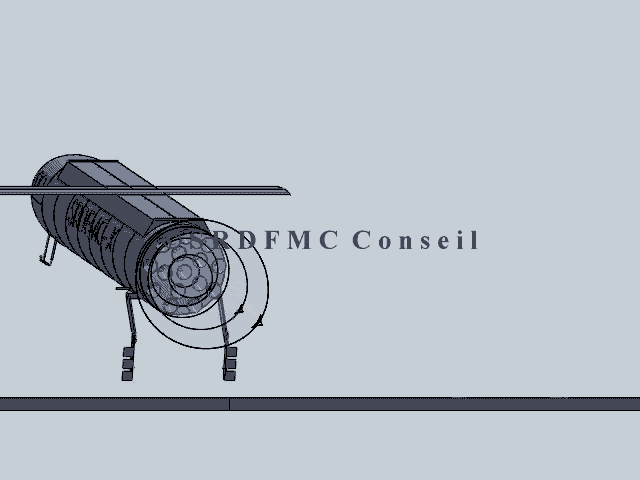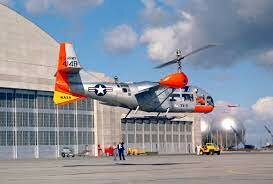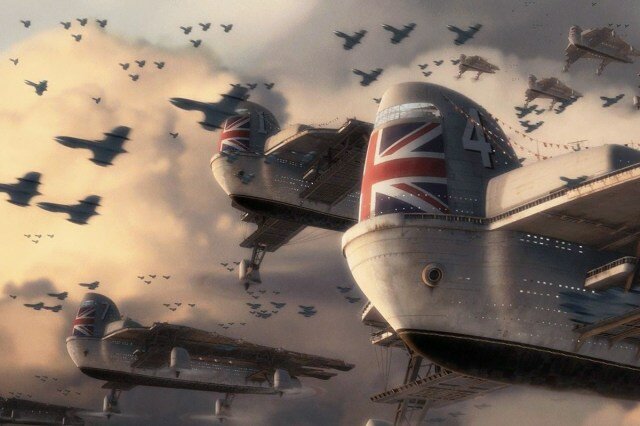- Joined
- 11 March 2012
- Messages
- 3,244
- Reaction score
- 3,171
Design Challenge: Next Generation Carrier Onboard Delivery Airplane for the US Navy
This challenge was inspired by a real thread about difficulties introducing the CV-22 Osprey, tilt-rotor, Carrier Onboard Delivery variant to the US Navy.
What if the C-2 Greyhound fleet is due for retirement?
But C-2 and E-2 tooling is no longer available because hand-wavium worms have nibbled on the certified assembly jigs?
What if the CV-22 was judged unsuitable for the COD role?
It must be able to do all existing COD missions, plus inflight-refueling and a possible future Airborne Early Warning role.
The new airplane can have turbo-prop or turbo-fan engines.
It must be able to carry all the cargo items (e.g. complete engines) currently carried by C-2 and CV-22. Ideally even longer or wider items??????
Cargo size requirements also dictate the size of cargo ramps, cargo doors, hinged noses, etc. needed to quickly load or unload on a pitching ship's deck.
The next generation COD must be able to carry as many tons as existing CODs ... or more.
Range must equal or exceed existing CODs.
Cruise speed must be fast enough to refuel fast-jets.
It needs de-icing boots to fly through know-icing weather.
Emphasis on STOL performance to allow it to land slowly, at heavier weights. Catapult fittings and arrestor hooks will be standard.
Landing gear may be built in two distinct variants with high-pressure tires for carrier landings or a bolt-on set of low-pressure tires for a USMC mission to semi-prepared landing strips.
The cockpit needs to be pressurized (while refueling fast jets and cruising). But debate still rages as to whether it needs a full-pressurized cabin for carrying passengers. Some engineers have suggested a rigid, pressurized, cargo container for passengers, while others have suggested a simpler floor pallet with a soft, inflatable, pressure cabin (ala. Bigelow Aerospace module bolted to International Space Station).
A variety of quick-access panels will allow it to bolt-on the latest radios, chaff dispensers, flare launchers, electronic warfare gadgets, etc.
Wings must fold small enough to reduce foot-print when sleeping-over on the carrier deck.
Finally it must be less expensive to build and maintain than existing COD.
To sum things up, this third-generation COD must be able to fly all existing COD missions, plus refuel fast jets and maybe a future AEW role.
USMC are also asking for a STOL variant to supply forward operating bases.
This challenge was inspired by a real thread about difficulties introducing the CV-22 Osprey, tilt-rotor, Carrier Onboard Delivery variant to the US Navy.
What if the C-2 Greyhound fleet is due for retirement?
But C-2 and E-2 tooling is no longer available because hand-wavium worms have nibbled on the certified assembly jigs?
What if the CV-22 was judged unsuitable for the COD role?
It must be able to do all existing COD missions, plus inflight-refueling and a possible future Airborne Early Warning role.
The new airplane can have turbo-prop or turbo-fan engines.
It must be able to carry all the cargo items (e.g. complete engines) currently carried by C-2 and CV-22. Ideally even longer or wider items??????
Cargo size requirements also dictate the size of cargo ramps, cargo doors, hinged noses, etc. needed to quickly load or unload on a pitching ship's deck.
The next generation COD must be able to carry as many tons as existing CODs ... or more.
Range must equal or exceed existing CODs.
Cruise speed must be fast enough to refuel fast-jets.
It needs de-icing boots to fly through know-icing weather.
Emphasis on STOL performance to allow it to land slowly, at heavier weights. Catapult fittings and arrestor hooks will be standard.
Landing gear may be built in two distinct variants with high-pressure tires for carrier landings or a bolt-on set of low-pressure tires for a USMC mission to semi-prepared landing strips.
The cockpit needs to be pressurized (while refueling fast jets and cruising). But debate still rages as to whether it needs a full-pressurized cabin for carrying passengers. Some engineers have suggested a rigid, pressurized, cargo container for passengers, while others have suggested a simpler floor pallet with a soft, inflatable, pressure cabin (ala. Bigelow Aerospace module bolted to International Space Station).
A variety of quick-access panels will allow it to bolt-on the latest radios, chaff dispensers, flare launchers, electronic warfare gadgets, etc.
Wings must fold small enough to reduce foot-print when sleeping-over on the carrier deck.
Finally it must be less expensive to build and maintain than existing COD.
To sum things up, this third-generation COD must be able to fly all existing COD missions, plus refuel fast jets and maybe a future AEW role.
USMC are also asking for a STOL variant to supply forward operating bases.















